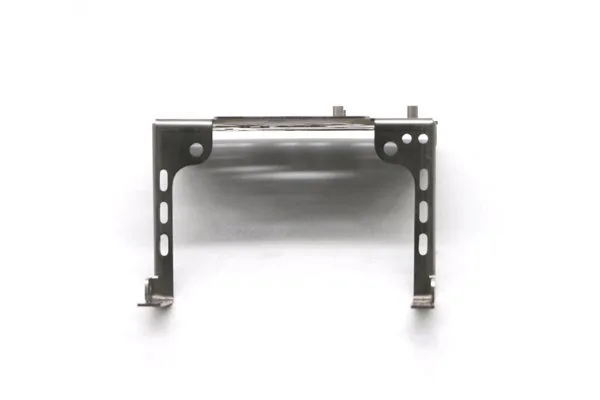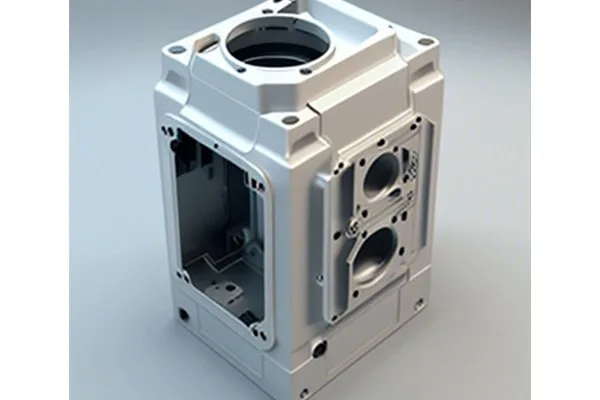In the heart of manufacturing innovation lies a powerful technology known as 5 Axis CNC milling. At YL Machining, we continually seek to harness this cutting-edge technique to not only enhance our machining capabilities but to also redefine what is possible in prototype manufacturing. As industries evolve, so do the expectations surrounding precision, efficiency, and delivery timelines. This shift necessitates a deeper understanding of advanced manufacturing processes, particularly CNC milling.
In this comprehensive article, we will explore the intricacies of 5 Axis CNC milling—what it is, how it differs from traditional machining processes, and why it is a game-changer in prototype manufacturing. With close attention to detail, we strive to illuminate the complexities and advantages of this technology while keeping your interest piqued. Buckle up as we embark on this journey towards a more advanced understanding of manufacturing excellence!
CNC milling, or Computer Numerical Control milling, is a subtractive manufacturing process where pre-programmed computer software dictates the movement of factory tools and machinery. Unlike traditional manual milling, CNC milling allows for greater precision, efficiency, and versatile design options. The entire cycle involves several stages: design creation, CAM programming, tool selection, and, ultimately, the actual machining.
1.1 The Evolution of CNC Technology
CNC technology has progressed through various phases, from simple two-dimensional operations to today’s state-of-the-art 5 Axis systems. The initial models worked diligently on only two dimensions, manipulating tools along the X and Y axes. As technology improved, manufacturers began integrating Z-axis functionalities, allowing vertical movement.
The emergence of 4 and 5 Axis CNC milling soon followed, enabling not only the three-dimensional movement but also the ability to tilt and rotate the workpiece or the tool itself. This capability opened new avenues for intricate designs and higher productivity.
5 Axis CNC milling incorporates two additional rotational axes, offering a more complex machining capability that increases precision and reduces the need for tool reorientation. Specifically, the five axes are comprised of:
This multifaceted movement allows for the machining of complex geometries that would be nearly impossible to achieve using traditional 3 Axis methods.
2.1 Benefits of 5 Axis CNC Milling
The advantages of 5 Axis CNC milling over traditional methods are significant, particularly in prototype manufacturing:
3.1 Speeding Up the Development Process
In today’s fast-paced market, the speed of product development can significantly dictate a company’s success. 5 Axis CNC milling streamlines the prototype creation process from design to finished product. With the software’s capabilities driving precision, manufacturers can iterate and refine designs at an accelerated rate.
For instance, in the automotive sector, companies often face stringent deadlines from clients seeking quicker deliveries. The agility of 5 Axis CNC milling meets the challenge by producing accurate prototypes, facilitating concurrent engineering processes, and reducing lead times.
3.2 Meeting Design Challenges
The complexity of modern designs often presents hurdles in the manufacturing phase. Traditional machining methods can limit a designer’s creativity, as intricate shapes may be unfeasible. Here, the versatility of 5 Axis CNC milling shines through by accommodating elaborate designs on a single setup. The ability to seamlessly tackle complex forms without compromising integrity is invaluable in producing prototypes that mirror end products.
To underscore the impact of 5 Axis CNC milling in prototype manufacturing, let’s explore some real-world implementations.
4.1 The Aerospace Industry
In the aerospace sector, stringent regulations and safety requirements necessitate precision manufacturing. A leading aerospace component manufacturer adopted 5 Axis CNC milling for producing turbine blades. The result was a significant reduction in machining time, coupled with enhanced accuracy, thereby boosting production rates while maintaining compliance with industry standards.
4.2 Consumer Electronics
A consumer electronics brand faced challenges with prototyping smartphone casings using traditional methods. By integrating 5 Axis CNC milling, they were able to create lightweight, ergonomically designed cases that appealed to modern aesthetics while meeting functionality. The resulting prototypes significantly decreased their time-to-market.
5.1 Trends Shaping the Landscape
As manufacturing continues to advance, the future of 5 Axis CNC milling looks bright. Emerging technologies such as Artificial Intelligence (AI) and the Internet of Things (IoT) are set to revolutionize machining processes.
5.2 YL Machining’s Commitment
At YL Machining, we remain deeply committed to embracing the latest technologies and methodologies. Our investment in 5 Axis CNC milling capabilities has redefined our approach to prototype manufacturing, allowing us to meet client demands with unmatched quality and efficiency. We uphold a philosophy of continuous improvement, marrying tradition with innovation, which is fundamental in ensuring our clients receive the best possible service.
: Embracing Precision for Tomorrow’s Challenges
5 Axis CNC milling is not merely a manufacturing technique; it is an evolution that reshapes the landscape of prototype manufacturing. As industries strive for precision, efficiency, and rapid development, this technology offers the means to overcome conventional limitations.
At YL Machining, we recognize that our role transcends just producing prototypes. We are partners in our clients’ innovative journeys, helping them bring their visions to life with precision engineering. As we continue to navigate the complexities of advanced manufacturing, we invite you to join us in exploring the boundless possibilities 5 Axis CNC milling brings—an adventure that shapes the future, one prototype at a time.
—






